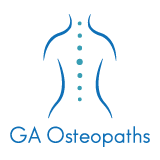Anyone calling themselves an osteopath is required by law to be currently registered by the General Osteopathic Council (GOsC). This is part of a government act that was passed in 1993. Osteopaths are also required by law to be insured to protect both the public and themselves. All our osteopaths are registered with the GOsC.
Osteopaths often include postural assessment during the first appointment and when re- assessing on subsequent appointments. This is easier when we can actually see your back/legs so we may ask you to remove outer clothing. Some people prefer to wear leggings/shorts so that they do not need to remove trousers and spaghetti-strap vests which can be lifted to see the lower part of the back as necessary. In some cases, treatment can take place in loose fitting clothing or leggings. One piece garments, such as dungarees or dresses are much harder to work around. You may be requested to remove jewelry such as necklaces, chains or large earrings.
It is very important that you feel able to communicate any wishes, questions or concerns you may have at any point before or during your visit.
As such, this idea of putting something ‘back into place’ is a misconception. A spinal joint out of place would be a very serious injury, and would certainly mean hospitalisation and not a visit to the osteopath. In fact, within osteopathic understanding, joints become restricted and limited in their normal function. Osteopathic treatment uses many treatment methods to try and restore that normal function. Another common misconception is spinal ‘discs being put back in’. Disc injury can be treated with osteopathy, but again treatment is applied to help the tissues to return to a more normal, healthy state.
If practiced by a qualified and sensitive osteopath they are not dangerous. Manipulations should not hurt if the osteopath has good technique and is respectful of a patient’s sensitivity. You shouldn’t assume that you will always have manipulation whenever you go to an osteopath, as many successful treatments can be conducted without its use. All good osteopaths will keep the patient informed of what they are doing as the treatment progresses.
Largely depends on the problem, and the osteopath will advise you on your first visit. As a general rule the more acute a problem then speed is of the essence, as an early assessment and diagnosis can speed the recovery time (in some cases by as much as weeks). If your problem is of a more long-standing nature it can take some time to ascertain the cause of the symptoms. Many muscular problems can be aggravated or caused by the most unlikely things, like emotional upset, office seating or even nutritional factors. Each problem is different and needs an individually assessed treatment plan. Your osteopath should be able to give you some indication on your first visit what treatment is required and how long it may take.
This depends on your problems and your osteopath will advise. Some patients with chronic pain feel that they benefit enormously by some maintenance treatment, while we only see others when they have a problem.
Sometimes there are unforeseen circumstances which mean that either a patient or an osteopath is unable to attend a prearranged appointment. If we are unable to make an appointment, we will ensure that the patients are informed as soon as possible. If you are unable to make an appointment, please get in touch with us as soon as possible to rearrange the visit. Notice of a cancellation gives us the opportunity to offer the space to someone else who may need it. If less than 24 hours notice is given, we may charge £25, unless we are able to fill the appointment. If an appointment is not attended without prior notice being given, we reserve the right to charge the full fee.
